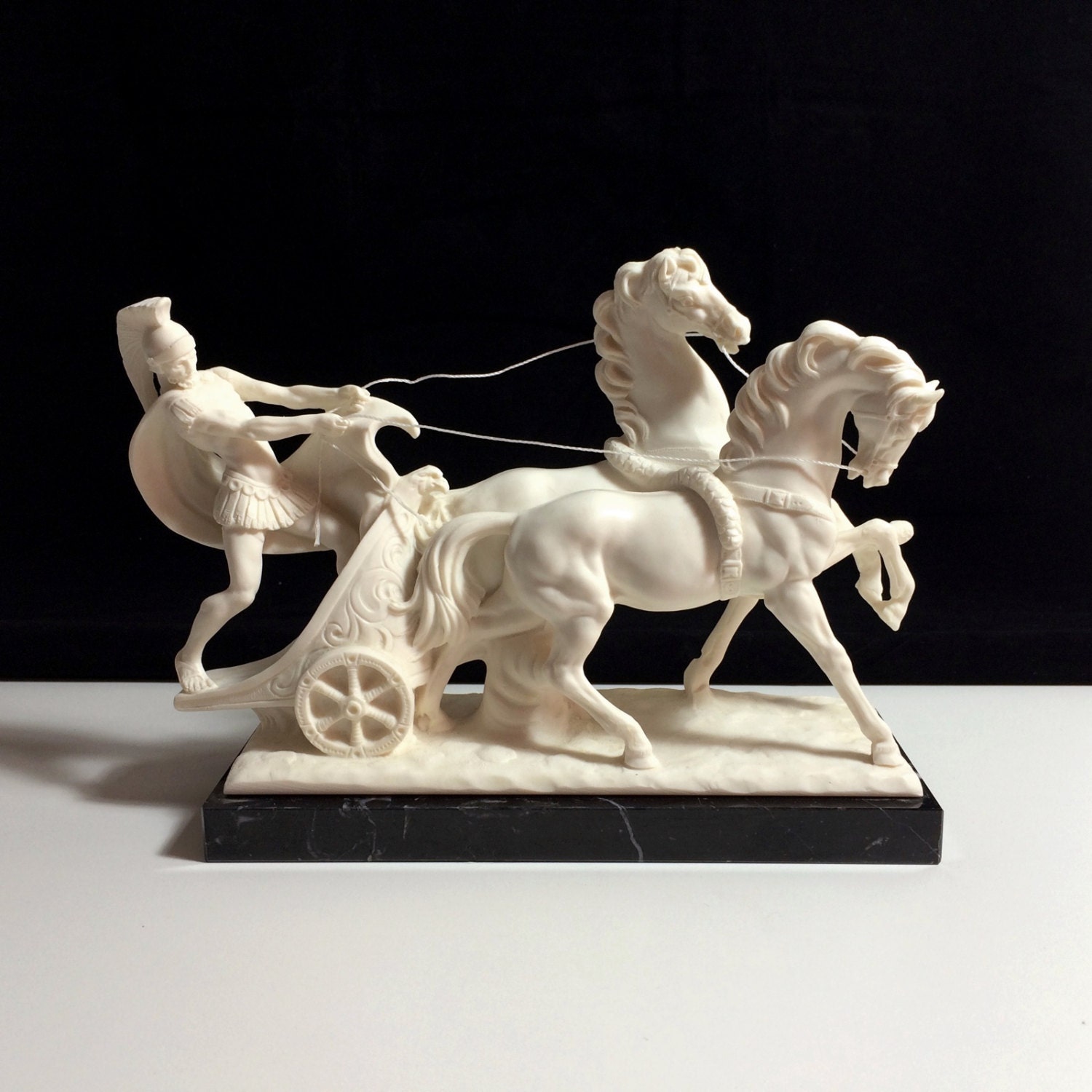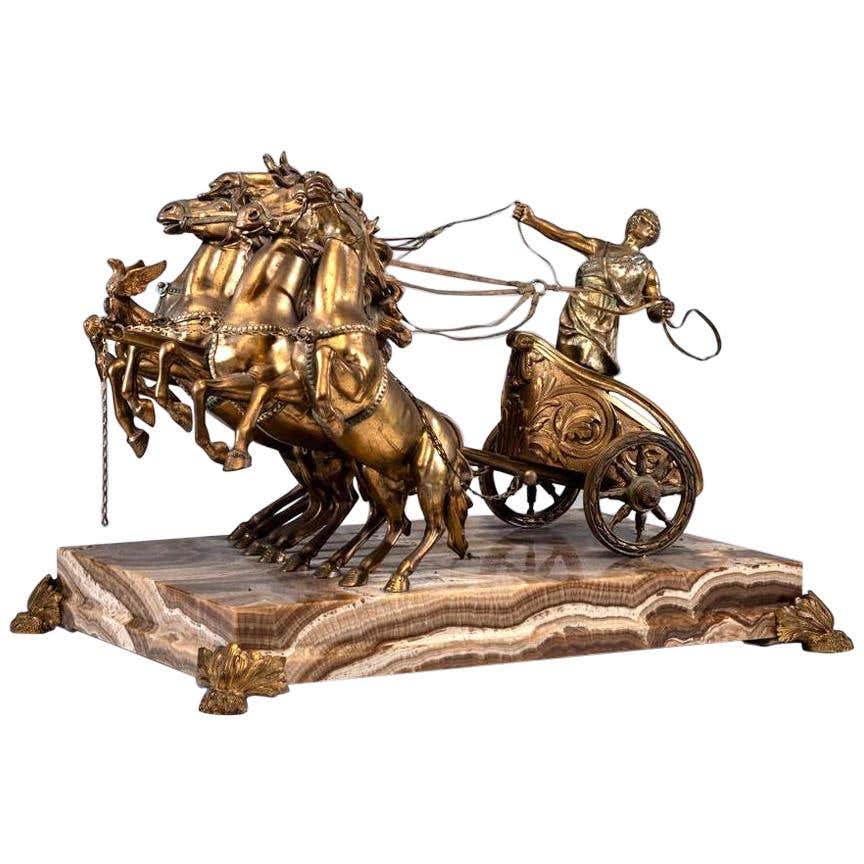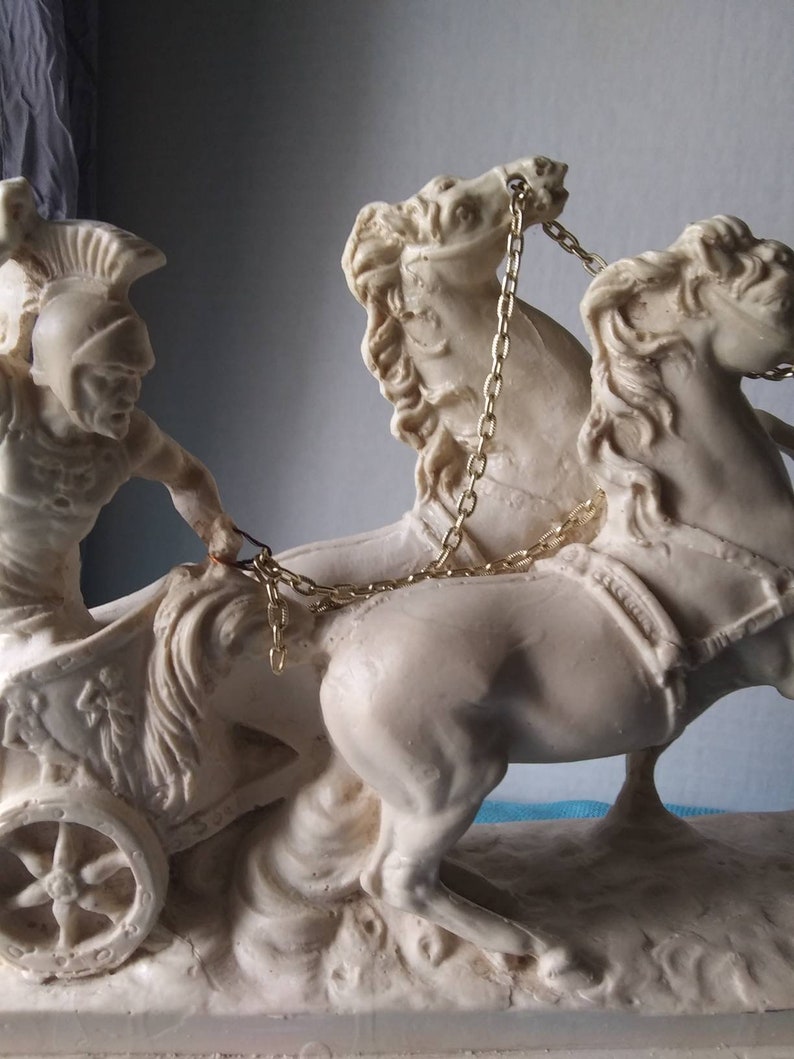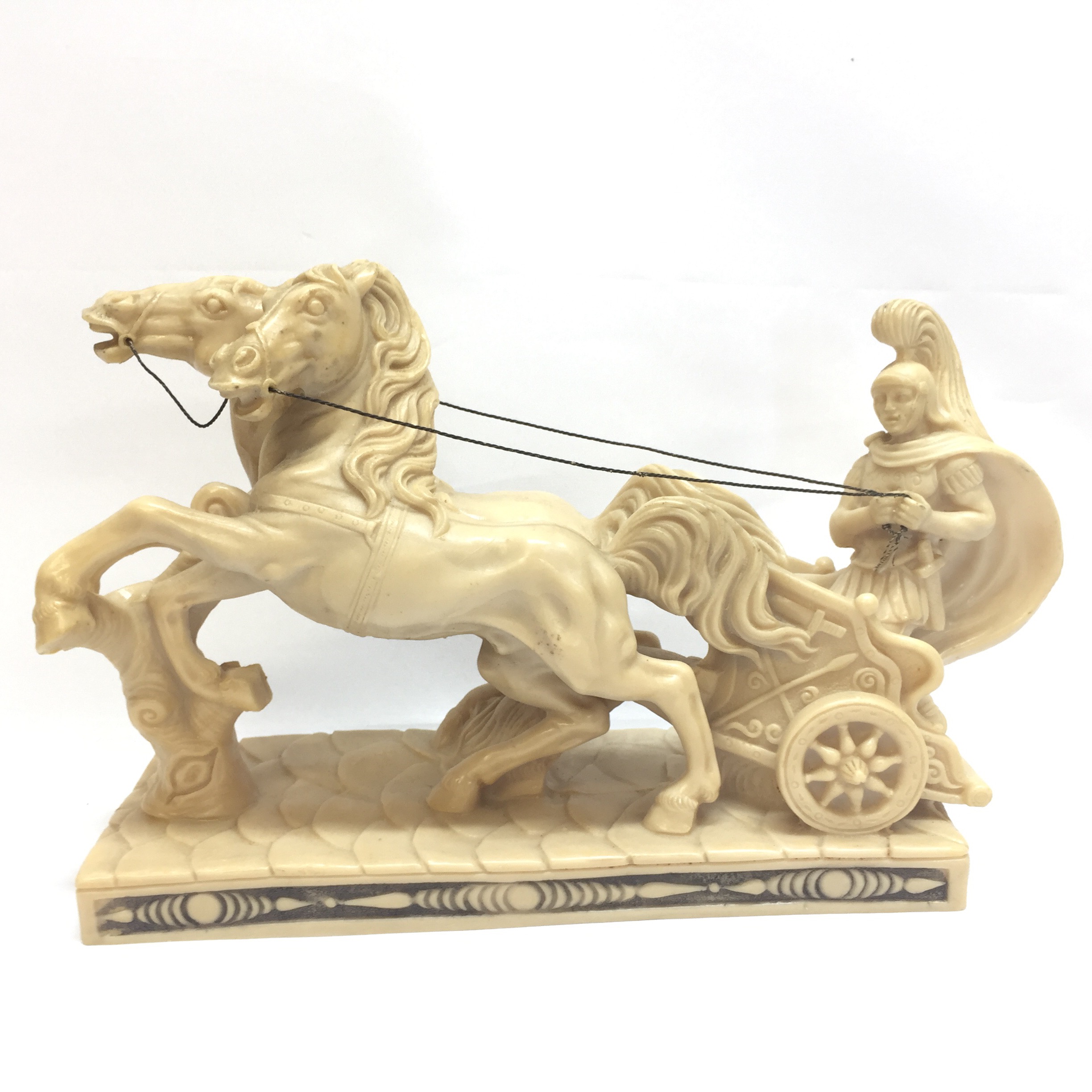
Vintage Santini Roman Chariot Sculpture Milton Wares
Boadicea and Her Daughters is a bronze sculptural group in London representing Boudica, queen of the Celtic Iceni tribe, who led an uprising in Roman Britain.It is located to the north side of the western end of Westminster Bridge, near Portcullis House and Westminster Pier, facing Big Ben and the Palace of Westminster across the road. It is considered the magnum opus of its sculptor, the.

Roman Chariot Sculpture Roman Charioteer Vintage Santini Etsy
Art of a Roman chariot. Chariot racing was one of the most popular sports in Roman history. It was a sport that lots of Romans had fans and cheered like modern sports in today's world. According to PBS, it was held at "The Circus Maximus" which could hold 200000 people. It was said that there was a sculpture called "spina" to show the fans how.

Pin on
The appliqué depicts a charioteer in his quadriga, holding the victor's crown and palm branch. In Rome chariot racing was organized into teams, each identified by a color—red, white, blue, or green.. The Museum's collection of Greek and Roman art comprises more than 30,000 works ranging in date from the Neolithic period to the time of.

Commanding Charioteer This ancient Roman charioteer commands his horses as he enters the arena
This Roman Chariot sculpture is cast of oxolyte - a material comprised of the powdered marble residue of the quarry industry bonded with resin. Hand-finished by expert Tuscan artisans in a family-owned factory operating for over 40 years. A shiny alabaster finish with a marble base. - Imported from Italy. - Dimensions: 8.5 W x 6 H x 2.75 D inches.

Bronze Roman Chariot Sculpture on Onyx Base For Sale at 1stDibs
Chariot. A vase showing a warrior riding a chariot pulled by a horse, from southeastern Iran, c. 2000-1800 BCE. Reconstructed Roman chariot drawn by horses. Approximate historical map of the spread of the spoke-wheeled chariot, 2000-500 BCE. A chariot is a type of cart driven by a charioteer, usually using horses [note 1] to provide rapid.

Large 10 Vintage Roman Chariot Sculpture by A. Santini
Pavonazzetto marble latrine in the form of a chariot. Cultures/periods Roman. Production date 2ndC-3rdC (early) (?) Findspot Excavated/Findspot: Baths of. XI.29; - A Guide to the Graeco-Roman Sculptures in the Department of Greek and Roman Antiquities, 2 vols. (London, 1874 [1892] and 1876), II, no. 121; - A. H. Smith, A Catalogue of.

Vintage Roman Soldier & Chariot Horses Sculpture Chairish
Bell 2004 S. W. Bell, Images of Chariot Racing in the Funerary Sculpture of the Roman Empire: Typology, Chronology and Context, Unpublished Ph.D. dissertation (Diss. University of Edinburgh 2004).

Bronze Roman Chariot Sculpture on Onyx Base at 1stDibs
The Chariot Race by Alexander von Wagner (1838-1919), c.1882, from Manchester Art Gallery. Depiction of a chariot race in a Roman stadium known as a circus. The scene is extremely dramatic and places the viewer directly in the path of the galloping horses, who appear to be almost flying along, with all four hooves lifted off the ground at.

Signed Roman chariot rider & horse sculpture
The Roman chariot wheel built upon knowledge gained by earlier wheelwrights in Europe and elsewhere to create multi-spoked, relatively simple and economical wooden wheels with or without iron tires. To understand the design, construction and physical characteristics of a chariot it is necessary to consider two classes of structural elements:

Brass Roman Chariot & Steeds Sculpture Chairish
Department of Greek and Roman Art, The Metropolitan Museum of Art. October 2006. Spectacle was an integral part of life in the Roman world. Some forms of spectacle—triumphal processions, aristocratic funerals, and public banquets, for example—took as their backdrop the city itself.. and circuses for chariot races . As a whole, this.

Bronze Sculpture "The Roman Charioteer" by Arthur Strasser (Austrian, 18541927) in 2022
A life-size bronze statue of a man named Aule Metele, commonly known as The Orator, dates back to the early 1st century B.C.E., and alludes to the origins of the Roman Empire. The Orator raises his arm to a crowd; although he is Etruscan, he wears an outfit typical of a Roman magistrate: a short toga and boots.

Roman Chariot Sculpture Roman Charioteer Vintage Santini Etsy
Introduction. Ancient Roman sculpture, unlike the more international Greek sculpture, is not noted for its beauty or decorative qualities. This is because Roman art was not made to be beautiful, it was made to impress. It was designed to awe and impress other nations with its gravitas and sense of power. Portrait busts showed serious-looking.

Roman Chariot Sculpture Getty Museum Store
Quadriga. Horses of Saint Mark in Venice. A quadriga is a car or chariot drawn by four horses abreast and favoured for chariot racing in Classical Antiquity and the Roman Empire. The word derives from the Latin quadrigae, a contraction of quadriiugae, from quadri-: four, and iugum: yoke. In Latin the word quadrigae is almost always used in the.

Vintage Santini Roman Chariot Sculpture Milton Wares
Roman sculpture did, however, begin to search for new avenues of artistic expression, moving away from their Etruscan and Greek roots, and, by the mid-1st century CE, Roman artists were seeking to capture and create optical effects of light and shade for greater realism. By later antiquity, there was even a move towards impressionism using tricks of light and abstract forms.

Signed Roman chariot rider & horse sculpture
Roman Art (500 BCE - 500 CE): Architecture, Colosseum: Relief Sculpture, Trajan's Column: Painting, Fayum Mummy Portraits.. this was the main Roman chariot racing venue in Rome, Italy. Measuring roughly 2,000 feet in length (610 metres) and 400 feet in width (120 metres), it was rebuilt in the age of Julius Caesar to seat an estimated.

19th C. French Bronze And Marble Roman Charioteer Sculpture For Sale at 1stdibs
Media in category "Chariots in ancient Roman art". The following 46 files are in this category, out of 46 total. Bronze lamp representing the moon-goddess Luna. Roman 1st century AD. British Museum, London.jpg 1,884 × 2,368; 2.29 MB. Maria Saal Wallfahrtskirche Mä.